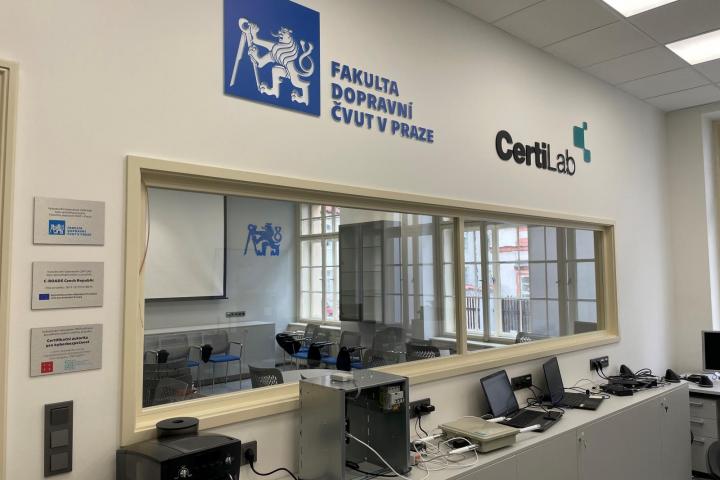
Making Automated Mobility Safe
Autonomous vehicles are still working their way into the modern automotive marketplace. However, they are growing more common each year. Many agree, this is an innovative change, and it’s estimated that there will be more autonomous vehicles on the road in the coming years.
According to experts, the growth in the presence of autonomous vehicles will help reduce accidents by up to 90 percent. This reduction can save up to 30,000 lives each year.
The question is, what is it that makes autonomous vehicles so much safer? Also, what new safety features have been implemented in these tech-forward vehicles? If you, like others, have similar questions, the answers you are looking for are found here.
Emergency Braking
This is a feature found in many passenger vehicles, even those that don’t feature self-driving abilities. The vehicle uses cameras to determine the distance between itself and the surrounding traffic and engages the brakes if there is a possibility of a collision. The system may also include warning systems to alert drivers if a collision is imminent.
Lane Control
The cameras mentioned above also ensure that autonomous vehicles don’t depart from the assigned lane unnecessarily. The continuous steering feature ensures that the car remains centered in the proper lane.
Lane control capabilities are another safety feature implemented in many passenger models, even those lacking autopilot. The cameras are programmed to read lane markings and to keep the vehicle going where it’s supposed to while providing warnings if it drifts out of the proper lane.

Upgraded Windshields
The Tesla Model 3 was the first part-autonomous car to feature an upgraded windshield. Not only does the brand (Tesla) make the glass for the windshield in-house, it’s also designed at a lighter weight, providing better insulation and increased durability compared to traditional auto glass.
For autonomous vehicles, windshields are much more than safety features. The upgraded window glass makes it possible to include more integrated hardware and software. It’s believed it may eventually eliminate the need for more traditional safety equipment, such as rearview and side mirrors.
Cross Car Communication
Beyond popular Disney movies, most vehicles don’t talk to each other. However, this is another feature that may be changing as autonomous vehicles grow in popularity. For example, the autopilot feature offered by Tesla relies on communication between other Tesla vehicles to become better and safer.
If one vehicle encounters poor driving conditions, traffic, or another hazard, it transmits that information via the cloud. The information is then disseminated to other vehicles in the network so they can determine how to react if the same situation is encountered.
Currently, this is a feature only available on standard Tesla models; however, the National Highway Traffic Safety Administration is to make this car-to-car communication a standard feature on all makes and models.
In the European Union, the Car-to-Car communication is pushed for example by a C-Roads platform, which is a joint initiative of European Member States and road operators for testing and implementing C-ITS services in light of cross-border harmonisation and interoperability. TeskaLabs participates in a C-Roads Czech Republic deployment as a supplier of cybersecurity technologies.
Proceed with Caution
While the growth of autonomous vehicles on the roads is continuing to grow, it has raised questions and concerns among both experts and drivers. While they are built with additional safety features (as mentioned above), there’s still a risk of accidents.
As self-driving cars grow in popularity, the possibility of them being sold used also grows. As with buying any used vehicle, before purchasing a used autonomous vehicle, research must be done, including a search on Vincheck.info to ensure there’s no information that may indicate a problem with the vehicle.
While this is true, it will not stop the evolution and appearance of these vehicles on the road, as the technology is spreading and becoming more mainstream with each passing year. It will be up to the owners to ensure what they are buying features the safety elements needed.

Are you interested in security for connected vehicles? Visit this page
Most Recent Articles
- A beginner-friendly intro to the Correlator for effective cybersecurity detection
- Inotify in ASAB Library
- From State Machine to Stateless Microservice
- Entangled ways of product development in the area of cybersecurity #3 - LogMan.io
- Entangled ways of product development in the area of cybersecurity #2 - BitSwan
You Might Be Interested in Reading These Articles

Binary distributions of OpenSSL static libraries
The official source of OpenSSL software is the OpenSSL website. One can download OpenSSL source codes archives and compile them for a given platform. The compilation work can sometimes be quite tedious, especially for exotic platforms. We, at TeskaLabs, set up this page because we frequently compile OpenSSL for various platforms for our internal purposes and this may save some time to other developers.
development
android
windows
ios
security
Published on July 20, 2017

How to enter the world of logs and cybersecurity.
What does it mean to log, create a corresponding dashboard and start writing JSON syntax? As I searched for answers to these questions and what were my first steps in tracing the world of cybersecurity.
Published on March 15, 2022

TeskaLabs SeaCat PKI for C-ITS delivered to CertiLab of Czech Technical University
TeskaLabs supplies the SeaCat PKI and the dedicated C-ITS security testing tool for CertiLab, laboratory for the development and testing of technologies for Cooperative Intelligent Transport Systems (C-ITS).
press
automotive
c-its
v2x
security
Published on July 07, 2021
